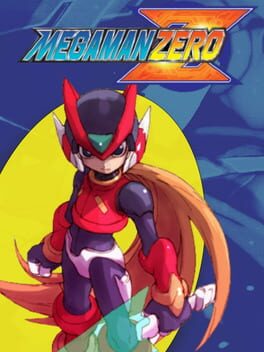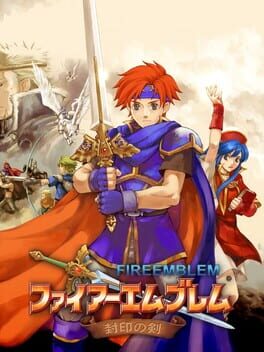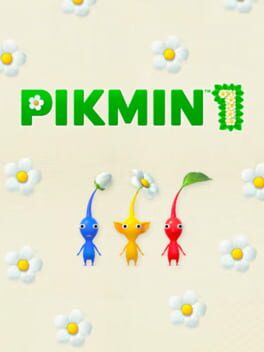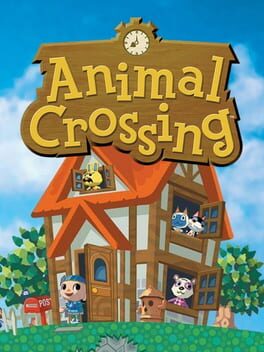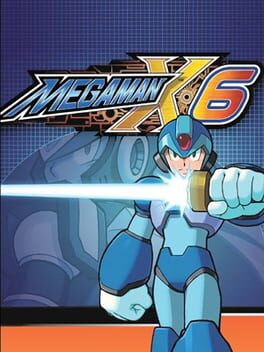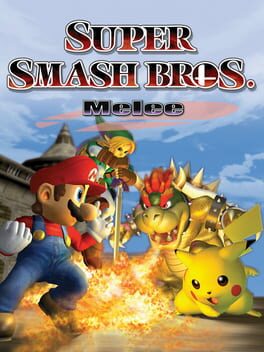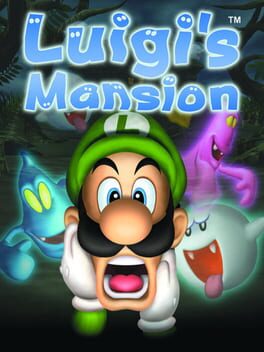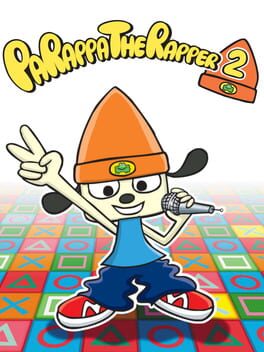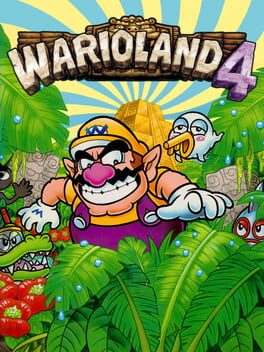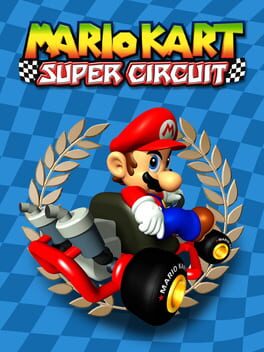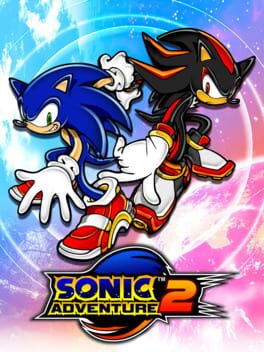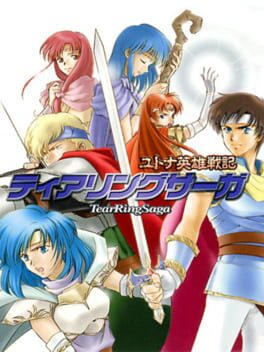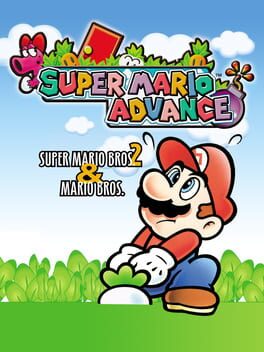tuskoub
2002
The GameCube had my childhood library. I should have nostalgic bias towards this game. To be completely fair, I do for parts of it. The summer-y setting is very creative, especially how they theme multiple different worlds around one central theme. The movement is very fun and feels great to control for the most part. The soundtrack is vibrant and playful. It introduced Bowser Jr., a character I've always had a soft spot for.
However, there is too much about this game holding it back from a higher rating for me. The level designs are not nearly as solid or engaging as they are in other Mario games, especially not the FLUDDless ones. I have ran into more glitches without trying to while playing this game than most others I've played.
The grand point that has doomed this game to stay at the bottom of my 3D Mario ranking is the fact that I tend to be a nut for 100% completion. That's right, I 100%d this game. Doing so made me never want to play this game to that level of completion again. There are many levels that were tedious, frustrating, or both. Aside from the famous examples everyone knows, Gelato Beach 100 Coins jumps to mind. Plus, finding all the Blue Coins feels way too obscure without a guide and that never feels good.
In summary, immaculate vibes offset by uncharacteristically poor level design, frustrating missions, and a 100% goal that becomes a practice in patience. I'd been told many times before I stubbornly did so to "not go for 100%". I did it because I wanted to have a full experience of the game and be able to comment on it in its entirety, to be able to say I did. For anyone else who feels that way, prepare yourself.
However, there is too much about this game holding it back from a higher rating for me. The level designs are not nearly as solid or engaging as they are in other Mario games, especially not the FLUDDless ones. I have ran into more glitches without trying to while playing this game than most others I've played.
The grand point that has doomed this game to stay at the bottom of my 3D Mario ranking is the fact that I tend to be a nut for 100% completion. That's right, I 100%d this game. Doing so made me never want to play this game to that level of completion again. There are many levels that were tedious, frustrating, or both. Aside from the famous examples everyone knows, Gelato Beach 100 Coins jumps to mind. Plus, finding all the Blue Coins feels way too obscure without a guide and that never feels good.
In summary, immaculate vibes offset by uncharacteristically poor level design, frustrating missions, and a 100% goal that becomes a practice in patience. I'd been told many times before I stubbornly did so to "not go for 100%". I did it because I wanted to have a full experience of the game and be able to comment on it in its entirety, to be able to say I did. For anyone else who feels that way, prepare yourself.
2002
Next in line from the Mega Man franchise, after the X series grew shakier and shakier. For starters, this game is great to look at. It's not quite as pretty as the 32-Bit Mega Man X games but it still looks very nice.
Second big positive, I love how the boss fights play. They are much more intensive than any of their predecessors and are very satisfying to take down after mastering avoiding their patterns. Combat is slick and fun.
I found this game to be very difficult, only to find out I made it much worse for myself but not knowing that Health Upgrades were a thing. I unintentionally did a challenge run. Oops. However, I have heard of this happening to multiple other people. At first I would have brushed this off as a "my fault" but since I know I'm not the only one, it tells me that this game communicates its entire Elf and Health System very poorly.
I really like the premise of the story in this game, with Copy X being an example of what could've been if X didn't undergo the morality tests. I do think Zero is not quite his usual self though, he acts a bit more standard and lacks his usual edge.
My biggest knock against this game is the Lives system. I know this is a handheld game but it seriously makes this game very unapproachable unless you're playing on the Zero/ZX Legacy Collection, in my opinion. The screen crunch is another big detractor and it regularly feels like the levels weren't properly designed with this in mind.
An okay start to this sub-series with many cool concepts and boss fights yet definitely feels like a growing stage to get used to the newer, more constrained hardware.
Second big positive, I love how the boss fights play. They are much more intensive than any of their predecessors and are very satisfying to take down after mastering avoiding their patterns. Combat is slick and fun.
I found this game to be very difficult, only to find out I made it much worse for myself but not knowing that Health Upgrades were a thing. I unintentionally did a challenge run. Oops. However, I have heard of this happening to multiple other people. At first I would have brushed this off as a "my fault" but since I know I'm not the only one, it tells me that this game communicates its entire Elf and Health System very poorly.
I really like the premise of the story in this game, with Copy X being an example of what could've been if X didn't undergo the morality tests. I do think Zero is not quite his usual self though, he acts a bit more standard and lacks his usual edge.
My biggest knock against this game is the Lives system. I know this is a handheld game but it seriously makes this game very unapproachable unless you're playing on the Zero/ZX Legacy Collection, in my opinion. The screen crunch is another big detractor and it regularly feels like the levels weren't properly designed with this in mind.
An okay start to this sub-series with many cool concepts and boss fights yet definitely feels like a growing stage to get used to the newer, more constrained hardware.
For a franchise that had just been deprived of its long-term lead creative minds and key development staff (Shouzou Kaga, Mayumi Hirota, and many more), I think stripping back to the most core mechanics, storytelling devices, and design was a smart idea.
I do have some biases in favor of this game. Growing up introduced to Fire Emblem through the GBA games always gave me an affinity for this unlocalized entry as some "cool obscure one that was like the ones I knew". Plus, it has many maps and chapters that are reminiscent of Thracia 776, my favorite game.
This game is a bit tougher than the average Fire Emblem, which feels a bit strange of a balance direction for what was clearly intended to be a soft-reboot to introduce new players, but I enjoy that. I enjoy the quirks like the less reliable accuracy, the huge playable cast with lopsided unit balancing, and more.
Its fun to replay, trying out new units and going different combinations of paths. I really enjoy revisiting this one. It's not my favorite FE out there since its story can be a bit flat for some parts, some maps can be really annoying, and sometimes the quirks are too quirky, but I can definitely say I like this one.
I do have some biases in favor of this game. Growing up introduced to Fire Emblem through the GBA games always gave me an affinity for this unlocalized entry as some "cool obscure one that was like the ones I knew". Plus, it has many maps and chapters that are reminiscent of Thracia 776, my favorite game.
This game is a bit tougher than the average Fire Emblem, which feels a bit strange of a balance direction for what was clearly intended to be a soft-reboot to introduce new players, but I enjoy that. I enjoy the quirks like the less reliable accuracy, the huge playable cast with lopsided unit balancing, and more.
Its fun to replay, trying out new units and going different combinations of paths. I really enjoy revisiting this one. It's not my favorite FE out there since its story can be a bit flat for some parts, some maps can be really annoying, and sometimes the quirks are too quirky, but I can definitely say I like this one.
2023
For full context, I began playing this series with 3 and then 4. I tend to prefer playing series in release-order so I have better context for their release, but I was still able to enjoy my time with Pikmin 1.
At first, I wasn't a big fan of the aiming and movement being married but, eventually I came around to it. This is in-large part thanks to the Line-Up Trumpet/C-Stick guiding. I enjoyed most sections in this game throughout its incredibly short playtime. The different Pikmin felt like they had their uses, even Yellow in my opinion.
The only negatives I have are that the game doesn't make a good first or last impression with its bosses, leading and ending with its less engaging ones. The Burrowing Snagret boss fight is really unfun and a splash-of-water-to-the-face to get used to how the game works. Plus, while the final area is a really fun puzzle using all three types of Pikmin, the Emperor Bulblax feels like a very flaccid end to the game.
Other than that, my biggest positive towards this game (as I find I've been saying often with early-GameCube releases in these reviews, now that I think about it) is how this era of Nintendo mastered that "slightly creepy, wondrous, yet still cartoony and charming" atmosphere. A recent developer interview showed much of their inspiration coming from off-kilter foreign cartoons like those of Tim Burton's and playing this game with that knowledge was very fun. I felt the influence seeping out of every part of this game and it was easily my favorite trait of Pikmin 1
At first, I wasn't a big fan of the aiming and movement being married but, eventually I came around to it. This is in-large part thanks to the Line-Up Trumpet/C-Stick guiding. I enjoyed most sections in this game throughout its incredibly short playtime. The different Pikmin felt like they had their uses, even Yellow in my opinion.
The only negatives I have are that the game doesn't make a good first or last impression with its bosses, leading and ending with its less engaging ones. The Burrowing Snagret boss fight is really unfun and a splash-of-water-to-the-face to get used to how the game works. Plus, while the final area is a really fun puzzle using all three types of Pikmin, the Emperor Bulblax feels like a very flaccid end to the game.
Other than that, my biggest positive towards this game (as I find I've been saying often with early-GameCube releases in these reviews, now that I think about it) is how this era of Nintendo mastered that "slightly creepy, wondrous, yet still cartoony and charming" atmosphere. A recent developer interview showed much of their inspiration coming from off-kilter foreign cartoons like those of Tim Burton's and playing this game with that knowledge was very fun. I felt the influence seeping out of every part of this game and it was easily my favorite trait of Pikmin 1
2001
The term may seem played out nowadays but no single word better encompasses this release than "cozy". Everything about its simpler artstyle, more mellow sound design, and smaller scope is just so warm. I absolutely adore the soundtrack in this game. The suite of music here would comprise multiple spots of a "most relaxing BGM" list, were I to make one.
Another big point in this game's favor is how unrestrained the villagers are and how quaint it feels. Sometimes that "first entry in a longstanding series" vibe can be clunky and jank, but in this case, it's very charming! With that said, this game is much much lighter on things to do and whenever I start towns in this one, I've never found myself staying attached too long. I would still recommend anyone check this out at least for a week or so. Bask in its classic feel.
Another big point in this game's favor is how unrestrained the villagers are and how quaint it feels. Sometimes that "first entry in a longstanding series" vibe can be clunky and jank, but in this case, it's very charming! With that said, this game is much much lighter on things to do and whenever I start towns in this one, I've never found myself staying attached too long. I would still recommend anyone check this out at least for a week or so. Bask in its classic feel.
2001
I remember very little of my playthrough of this game, and not in a way that makes me feel a "I should replay this" mood. All I can remember is this game being very frustrating, having a very empty plot, and feeling like a grand step down from X5. The Nightmare effects are also not that interesting and the level design is very jank.
It gets the rating it does solely because I think the encounter with Sigma is a fun concept and because the 32-bit graphics are pretty. I wouldn't put it past anyone who wants to skip this game in their journey through the Mega Man series.
It gets the rating it does solely because I think the encounter with Sigma is a fun concept and because the 32-bit graphics are pretty. I wouldn't put it past anyone who wants to skip this game in their journey through the Mega Man series.
When Super Smash Bros. Melee is talked about, it is usually about its competitive, fast-paced, technical gameplay and tournament scene. However, I think it doesn't get enough props for being fun just in single player as well! Thus, since every other review will probably have gone in better details, I will focus more on the singleplayer. It's very evident how much of the Super Smash Bros. design was held back by the N64. This game really feels like a fully realized vision, even under the intense development cycle needed to produce this.
The simple act of unlocking characters with their various conditions, collecting trophies, doing Event matches, clearing Classic & All-Star, and every side mode makes this such an enjoyable experience outside of competitive. My favorite characters to play as are Marth and Luigi for sure. Plus, the orchestrated soundtrack and visuals are still enjoyable to this day.
I had a brief stint playing this game competitively when I was in High School but never at a large scale. Thus, I can't speak to the meta but I can say this is certainly a fun game to watch. It's always so cool to me just how long this game has endured. Even if you're not super adept at the technical skill, this is fun to play by yourself or watch high level matches of!
The simple act of unlocking characters with their various conditions, collecting trophies, doing Event matches, clearing Classic & All-Star, and every side mode makes this such an enjoyable experience outside of competitive. My favorite characters to play as are Marth and Luigi for sure. Plus, the orchestrated soundtrack and visuals are still enjoyable to this day.
I had a brief stint playing this game competitively when I was in High School but never at a large scale. Thus, I can't speak to the meta but I can say this is certainly a fun game to watch. It's always so cool to me just how long this game has endured. Even if you're not super adept at the technical skill, this is fun to play by yourself or watch high level matches of!
2001
If there's one thing this game masters, it's the haunting and eerie vibes. For a very early 5th-generation game, it's still very nice to look at and hasn't aged one bit in that regards. The lighting is perfectly atmospheric, the character designs are the exact perfect border of spooky and cartoony that no entry after this nails as hard. Other than that, it's a pretty solidly designed adventure game and I enjoy it for most of its short run. I also think the debate on whether this is a Metroidvania is funny.
2001
PaRappa the Rapper 2 rocks!! Every single stage's track is such a jam that it's hard for me to even narrow down which one is my favorite. I love Toasty Buns, Big, Sista Moosesha, and Hair Scare so damn much. This game's musical style is a lot more "funky" than the last game's "rock" style and the first game's "hip hop" style.
As for the actual rhythm mechanics themselves, they're improved tenfold to be more engaging and less easy to cheese. While this has the side effect of making Cool Mode near impossible, in my opinion, it's still very fun for normal play. Not only does it track rhythm, but also "originality", and "teacher's style". The combination of these three guides your play a bit more than just mashing random buttons that worked as it felt in the previous two entries sometimes.
Also very fun is the story! It's more in-line with the first game's corny Nickelodeon Saturday Morning Cartoon feel instead of the strange out-of-body experience (in a good way) feel that Um Jammer Lammy had. It still manages to be delightfully silly with plenty of jokes, gags, and cute characters. I thoroughly enjoyed the entire plot all the way through.
This game is so delightful and charming, the only negative I can possibly think of is that I wish there was more to play. Even then, your play time can be extended by doing the New Game+ runs with harder charts, going for Cool Mode, or playing Vs. against a friend. Absolutely the best PaRappa game, the one that really made me love the franchise, and makes me so desperately wish that this wasn't the last one they ever made.
As for the actual rhythm mechanics themselves, they're improved tenfold to be more engaging and less easy to cheese. While this has the side effect of making Cool Mode near impossible, in my opinion, it's still very fun for normal play. Not only does it track rhythm, but also "originality", and "teacher's style". The combination of these three guides your play a bit more than just mashing random buttons that worked as it felt in the previous two entries sometimes.
Also very fun is the story! It's more in-line with the first game's corny Nickelodeon Saturday Morning Cartoon feel instead of the strange out-of-body experience (in a good way) feel that Um Jammer Lammy had. It still manages to be delightfully silly with plenty of jokes, gags, and cute characters. I thoroughly enjoyed the entire plot all the way through.
This game is so delightful and charming, the only negative I can possibly think of is that I wish there was more to play. Even then, your play time can be extended by doing the New Game+ runs with harder charts, going for Cool Mode, or playing Vs. against a friend. Absolutely the best PaRappa game, the one that really made me love the franchise, and makes me so desperately wish that this wasn't the last one they ever made.
2001
This game has pretty much been my introduction to the Character-Action genre. As an intro, I think this is an incredible game. It definitely shows its Resident Evil origins with the camera angles and light puzzle elements. This also makes itself evident with the mood, ambience, and enemies. It starts to split off with its own sense of character with the corny (in a different way from RE) dialogue, intense music, and faster paced action.
Even this early into the series, the core of the design remains as solid as ever. Combos are fun to perform, progression is very satisfying and feels meaningful, and the different weapons you can use are fun. In particular, I really liked Ifrit for those powerful, meaty hits that feel like a bag of bricks thanks to the sound design and impact. I also greatly enjoy Devil Trigger as a mechanic, it feels very fun to have a short burst where you turn the tides on enemies and go hog wild.
The only real low points of the game are the Water sections, which feel out of place but are short and far between, and the three fights against Nightmare. In general, this game is relatively tough but that boss fight just feels tedious and unfun with the wait times for its weakness. Still, I enjoyed every other boss, Phantom, Griffin, and even all the phases of Mundus with how challenging it was. I'm not a fan of how obtuse the Secret Missions and some of the Blue Orbs are to find. The platforming segments can also be a bit frustrating.
There's a lot of good about this game that I would absolutely still recommend this even to modern players as a worthwhile experience and I think it should be played first by anyone interested in Character Action Games if they have a curiosity for this genre.
Even this early into the series, the core of the design remains as solid as ever. Combos are fun to perform, progression is very satisfying and feels meaningful, and the different weapons you can use are fun. In particular, I really liked Ifrit for those powerful, meaty hits that feel like a bag of bricks thanks to the sound design and impact. I also greatly enjoy Devil Trigger as a mechanic, it feels very fun to have a short burst where you turn the tides on enemies and go hog wild.
The only real low points of the game are the Water sections, which feel out of place but are short and far between, and the three fights against Nightmare. In general, this game is relatively tough but that boss fight just feels tedious and unfun with the wait times for its weakness. Still, I enjoyed every other boss, Phantom, Griffin, and even all the phases of Mundus with how challenging it was. I'm not a fan of how obtuse the Secret Missions and some of the Blue Orbs are to find. The platforming segments can also be a bit frustrating.
There's a lot of good about this game that I would absolutely still recommend this even to modern players as a worthwhile experience and I think it should be played first by anyone interested in Character Action Games if they have a curiosity for this genre.
2001
Wario Land 4 is great! It stands out a platformer for multiple reasons. Firstly, its offbeat designs, level themes, and music come together to form a very wacky presentation that sticks with you. Its mechanics are also different and separate from what you'd normally expect, with your special abilities coming from being hurt by enemies, the more puzzle-like structure of the levels, and the reverse-runs you do at the end of each.
I absolutely love the 18 levels in this game. Each one is so tightly designed with fascinating platforming challenges to take advantage of the powers granted to you by enemies, and the heavy moveset Wario rocks. The bosses are all very fun too and their disgusting designs are so appealing!
When the biggest problem a game has "I wish there was more of it", you know you have a great game on your hands.
I absolutely love the 18 levels in this game. Each one is so tightly designed with fascinating platforming challenges to take advantage of the powers granted to you by enemies, and the heavy moveset Wario rocks. The bosses are all very fun too and their disgusting designs are so appealing!
When the biggest problem a game has "I wish there was more of it", you know you have a great game on your hands.
I respect what this entry is going for, but it really feels like little more than "Watered-down Mario Kart" just like Super Mario Kart does. Being in 2D does not do a lot of favors for this series and makes a lot of tracks feel samey. While this game does a lot more in the way of unique themes and settings, they tend to not feel unique to play to me thanks to their flat layouts.
It also doesn't help that this game includes every track from Super Mario Kart, which sounds strange but it really does make every track blend together even harder.
Even multiplayer is much harder to set up with this entry compared to every other. At least all the cool track themes got remade in future entries to be fully realized.
It also doesn't help that this game includes every track from Super Mario Kart, which sounds strange but it really does make every track blend together even harder.
Even multiplayer is much harder to set up with this entry compared to every other. At least all the cool track themes got remade in future entries to be fully realized.
2012
This game is a very strong example of "I REALLY wish I liked this more". There's so much I enjoy here but too much that I dislike that I simply can't ignore. I love the campy story so dearly. I also greatly enjoy the cool-factor and spunk that permeates the game's entire Presentation and Soundtrack. I love the way this game looks and sounds.
The speed stages with Sonic and Shadow are fun for the most part, but sometimes feel a bit too out of control. I am also one of those people who really likes the Knuckles and Rouge stages, as a fan of collect-a-thons, they really appeal to me and the music in Knuckles' stages especially are my favorites in the OST.
However, the praise entirely stops when it comes to Tails/Eggman's stages. They are not fun to control, play, or navigate at all. They go on for so long too and there are so many of them. Every time I got to one, it felt like my playthrough would come to a screeching halt or I would take a break from the game for a few days. They were so unenjoyable that they are the primary detractor for me. If they were some side thing, fine, but they are VERY present and get in the way of the enjoyable parts. It also doesn't help that even in the stages I do enjoy, the controls can feel very janky and too slippery sometimes.
Without those parts, this game would be an easy 4.5/5 or 5/5 for me which makes this rating so frustrating. The score ends up landing just around "Good" which feels like a short-sell for all the parts I LOVE about this game. Then I remember the parts that actively felt grating to play and it just evens out the two. This is a game of high highs and low lows.
The speed stages with Sonic and Shadow are fun for the most part, but sometimes feel a bit too out of control. I am also one of those people who really likes the Knuckles and Rouge stages, as a fan of collect-a-thons, they really appeal to me and the music in Knuckles' stages especially are my favorites in the OST.
However, the praise entirely stops when it comes to Tails/Eggman's stages. They are not fun to control, play, or navigate at all. They go on for so long too and there are so many of them. Every time I got to one, it felt like my playthrough would come to a screeching halt or I would take a break from the game for a few days. They were so unenjoyable that they are the primary detractor for me. If they were some side thing, fine, but they are VERY present and get in the way of the enjoyable parts. It also doesn't help that even in the stages I do enjoy, the controls can feel very janky and too slippery sometimes.
Without those parts, this game would be an easy 4.5/5 or 5/5 for me which makes this rating so frustrating. The score ends up landing just around "Good" which feels like a short-sell for all the parts I LOVE about this game. Then I remember the parts that actively felt grating to play and it just evens out the two. This is a game of high highs and low lows.
2001
An extraordinary SRPG and the third in a streak of Greats from Director, Shouzou Kaga. The game as a whole feels like a ton of ideas that had been bottled up previously finally had the chance to come to fruition, following Kaga's departure from Intelligent Systems/Nintendo. In many ways, it's great to see this all realized and a refinement that takes from most every previous Fire Emblem game.
This game ultimately feels like it borrows most from Fire Emblem Thracia 776 and Fire Emblem Gaiden in its map/unit design and split paths respectively. One of my favorite aspects of Tear Ring Saga is how most units feel like they have a niche, and their own reason to be deployed, distinct even from characters in similar classes as them. This is a mark that continues to show up in Kaga's best works. You are constantly handed powerful units and/or powerful tools that only specific ones can use. It's very fun to mess around with Sierra's Warp, Raffin's Flight and Bulk, Plum's Dance, and the unique statlines of many other characters.
Throughout this game's longer-than-average runtime and with a whopping 40 main story chapters, you encounter many different map designs with smart enemy placements, fun side objectives, and tons of secrets that are fun to unravel. I enjoyed my time with most of the game's maps, though it is worth noting that some of Holmes' later maps definitely felt more worth a Warp Skip than the stronger chapters in the game.
I really love the story told in this game and the shifting perspective. The plot centers around what is effectively Medieval Mutually-Assured Destruction and seeing how the nations scramble to pick up the pieces and threaten use of such powerful deities and guardians makes a lot of sense. I also very much love how this game handles its "Fell Dragon" and "Evil Cult" compared to every single Fire Emblem game. Whereas Fire Emblem Genealogy of the Holy War touches on the persecution aspect, this game dives deep into it with a rich history of colonization and retaliation painting every side of the conflict. It's much more fascinating and enriching than the usual "Dark Cult evil just because" plot.
I won't go into full details but there are parts of this game that may necessitate trigger warnings for some players. Personally, I do think they bring up interesting gameplay ramifications and are realistic, grim parts of this world that absolutely would never have been explored in a Nintendo-published Kaga game, but I understand the perspective of people who think they are gratuitous as well. Still, it is very fascinating to me to give the player the choice to intentionally cause a very traumatic event to a character for no other purpose but a gameplay benefit. Usually games offer choices with equal gameplay trade-off, but this game tests the player and see if they're willing to make their digital characters suffer for their own benefit. It's something that feels very meta and modern, and I like that.
The game's biggest strength, can also be its weakness. Tear Ring Saga is very verbose. On the positive end, this means you get to learn a lot about EVERY last character in your cast (without it being relegated to optional or difficult to obtain conversations), every nation, and the history of this world down to the origin. On the downside, these tantalizing bits of information are not delivered in the most deft way possible. You will regularly be left with text boxes going back and forth for upwards of an hour at a time in some cases, 30 minutes on average in others.
Overall, Tear Ring Saga takes a lot of great aspects from a lot of great games and spreads its wings even further. For the Fire Emblem die-hard who's played every entry in that series, I would say this is a need-to-play. This game is an absolute joy to play and read.
This game ultimately feels like it borrows most from Fire Emblem Thracia 776 and Fire Emblem Gaiden in its map/unit design and split paths respectively. One of my favorite aspects of Tear Ring Saga is how most units feel like they have a niche, and their own reason to be deployed, distinct even from characters in similar classes as them. This is a mark that continues to show up in Kaga's best works. You are constantly handed powerful units and/or powerful tools that only specific ones can use. It's very fun to mess around with Sierra's Warp, Raffin's Flight and Bulk, Plum's Dance, and the unique statlines of many other characters.
Throughout this game's longer-than-average runtime and with a whopping 40 main story chapters, you encounter many different map designs with smart enemy placements, fun side objectives, and tons of secrets that are fun to unravel. I enjoyed my time with most of the game's maps, though it is worth noting that some of Holmes' later maps definitely felt more worth a Warp Skip than the stronger chapters in the game.
I really love the story told in this game and the shifting perspective. The plot centers around what is effectively Medieval Mutually-Assured Destruction and seeing how the nations scramble to pick up the pieces and threaten use of such powerful deities and guardians makes a lot of sense. I also very much love how this game handles its "Fell Dragon" and "Evil Cult" compared to every single Fire Emblem game. Whereas Fire Emblem Genealogy of the Holy War touches on the persecution aspect, this game dives deep into it with a rich history of colonization and retaliation painting every side of the conflict. It's much more fascinating and enriching than the usual "Dark Cult evil just because" plot.
I won't go into full details but there are parts of this game that may necessitate trigger warnings for some players. Personally, I do think they bring up interesting gameplay ramifications and are realistic, grim parts of this world that absolutely would never have been explored in a Nintendo-published Kaga game, but I understand the perspective of people who think they are gratuitous as well. Still, it is very fascinating to me to give the player the choice to intentionally cause a very traumatic event to a character for no other purpose but a gameplay benefit. Usually games offer choices with equal gameplay trade-off, but this game tests the player and see if they're willing to make their digital characters suffer for their own benefit. It's something that feels very meta and modern, and I like that.
The game's biggest strength, can also be its weakness. Tear Ring Saga is very verbose. On the positive end, this means you get to learn a lot about EVERY last character in your cast (without it being relegated to optional or difficult to obtain conversations), every nation, and the history of this world down to the origin. On the downside, these tantalizing bits of information are not delivered in the most deft way possible. You will regularly be left with text boxes going back and forth for upwards of an hour at a time in some cases, 30 minutes on average in others.
Overall, Tear Ring Saga takes a lot of great aspects from a lot of great games and spreads its wings even further. For the Fire Emblem die-hard who's played every entry in that series, I would say this is a need-to-play. This game is an absolute joy to play and read.
2001
This is the version of Super Mario Bros. 2 that I grew up with so prepare for a very nostalgia-loaded review. My feelings are pretty much the exact same for this version as with my review of the original so I will focus more on my experiences with this take.
I thought this game was very hard as a kid but have always had a lot of fun discovering the secrets in it. The exception nowadays being Level 5-3, that level is intensely difficult and easily my least favorite. The rest are mostly pretty unique and fun to play. I still enjoy them.
One of my favorite gaming memories came from playing this when I was in 6th grade. My friends and I would all gather around every morning before the school day began, I would bring my GBA SP with this in it and we'd either play Mario Bros. with our Link Cables or the main game. We found the secret multiplayer Bowser enemy and would all work together to try and beat him, even though he can't be. The best moment, however, came in our attempt to beat the main game. We took turns playing levels, laughing and having fun, cheering each other on, backseating, and giving advice. The day we made it to Wart was great and we eventually beat him (more accurately one of my old friends did, shoutouts to Connor). We were all so happy in what we felt like was a shared victory. We were jumping around all excited like we'd just landed on the Moon. Memories like those are at the core of what I feel for this game.
I really enjoy this game, and where others see the crunchy audio and voice clips as downsides, to me they're warm fuzzy nostalgia bits. It also helps that I was very into the Super Mario Bros. Super Show as I grew up alongside playing this game. It's a very unique Mario game in how it plays and upon replaying it recently, I genuinely enjoy seeking out the Advance Coins, the level layouts, and the post-game Yoshi Quest more than I thought I would. I understand why others don't like it but this game is definitely a core title in my gaming history.
I thought this game was very hard as a kid but have always had a lot of fun discovering the secrets in it. The exception nowadays being Level 5-3, that level is intensely difficult and easily my least favorite. The rest are mostly pretty unique and fun to play. I still enjoy them.
One of my favorite gaming memories came from playing this when I was in 6th grade. My friends and I would all gather around every morning before the school day began, I would bring my GBA SP with this in it and we'd either play Mario Bros. with our Link Cables or the main game. We found the secret multiplayer Bowser enemy and would all work together to try and beat him, even though he can't be. The best moment, however, came in our attempt to beat the main game. We took turns playing levels, laughing and having fun, cheering each other on, backseating, and giving advice. The day we made it to Wart was great and we eventually beat him (more accurately one of my old friends did, shoutouts to Connor). We were all so happy in what we felt like was a shared victory. We were jumping around all excited like we'd just landed on the Moon. Memories like those are at the core of what I feel for this game.
I really enjoy this game, and where others see the crunchy audio and voice clips as downsides, to me they're warm fuzzy nostalgia bits. It also helps that I was very into the Super Mario Bros. Super Show as I grew up alongside playing this game. It's a very unique Mario game in how it plays and upon replaying it recently, I genuinely enjoy seeking out the Advance Coins, the level layouts, and the post-game Yoshi Quest more than I thought I would. I understand why others don't like it but this game is definitely a core title in my gaming history.

